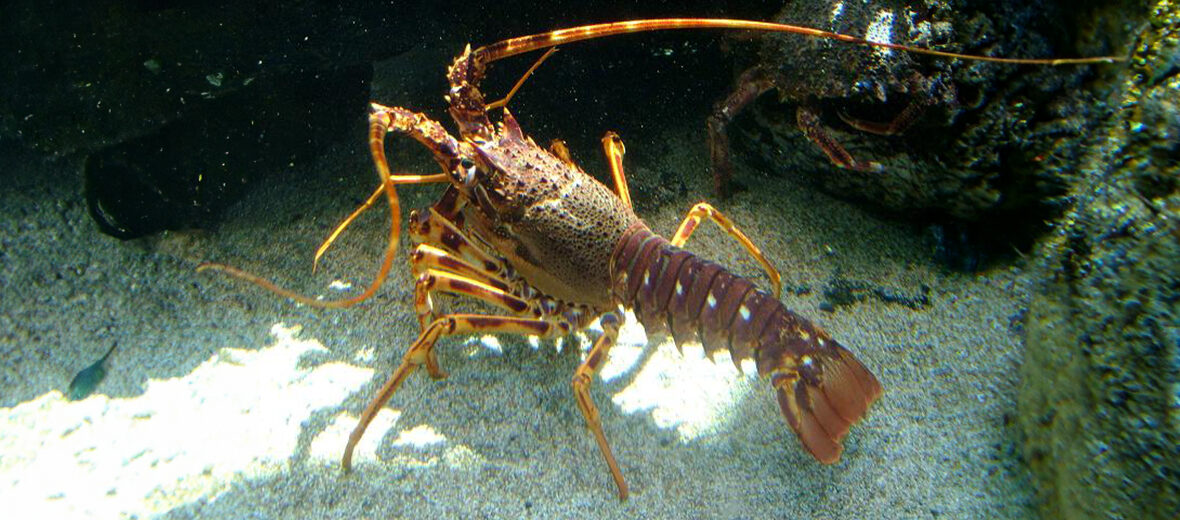
The common spiny lobster, aka langouste, langustas, or rock lobster, are part of approximately 60 species of achelate crustaceans. In Australia, New Zealand, Ireland, South Africa, and the Bahamas, they are often called crayfish, sea crayfish, or crawfish, or kreef in South Africa. They suffer at the hands of overfishing and over harvesting. Common spiny lobsters are listed as Vulnerable by the IUCN, and their numbers are decreasing.
First the Stats…
Scientific name: Palinuridae
Weight: Up to 26 lbs.
Length: Up to 3 feet
Lifespan: Up to 50 years
Now on to the Facts!
1.) Slipper lobsters (Scyllaridae) are their nearest living relatives.
2.) Spiny lobsters are noticeably different from other lobster species due to the lack of chelae (claws). Rather having prominent antennae.
3.) The spiny lobster has been around for approximately 110 million years.
4.) They prefer to dwell in rocks, crevices, and among coral reefs.
5.) These critters are nocturnal (active at night).
But wait, there’s more on the common spiny lobster!
6.) Snails, clams, sea-hares, crabs, and sea urchins are all on the menu.
7.) Sometimes, these lobsters will undertake migrations that are over 50 lobsters long.
Did you know…?
The name Palinurus is derived from the small Italian port of Palinuro, which was known for harvesting the European spiny lobster back in ancient Roman times. The town was named for the legendary figure of Palinurus, who was a helmsman in Virgil’s Æneid.
8.) These lobsters navigate via taste, smell, and even utilizing the earth’s magnetic field.
9.) While typically sticking together in large groups, if a lobster becomes infected, the group will abandon them to fend for themselves.
10.) A defense they have is to create a loud screech produced by the antennae of the spiny lobsters by rubbing against a smooth part of their exoskeleton.
But wait, there’s still more on the common spiny lobster!
11.) Like other true lobsters, spiny lobsters are edible. They are the biggest food export of the Bahamas.
12.) In 2022, landings of Caribbean spiny lobster in the Gulf of Mexico and South Atlantic totaled about 5.5 million pounds and were valued at an estimated $43.3 million, according to the NOAA Fisheries commercial fishing landings database.
Now a Short Common Spiny Lobster Video!
Be sure to share & comment below! Also, check out the Critter Science YouTube channel. Videos added regularly!
Want to suggest a critter for me to write about? Let me know here.
Some source material acquired from: Wikipedia & IUCN
Photo credit: A Photo Marine




